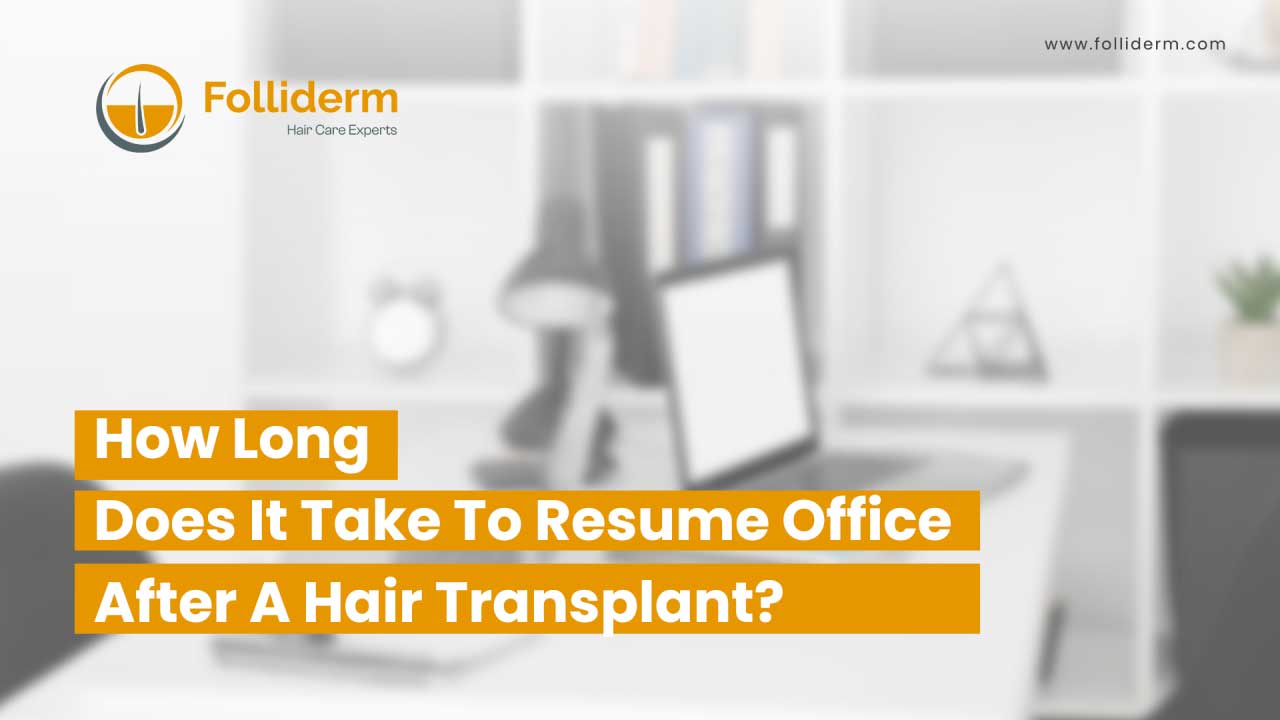
A hair transplant is a transformative procedure that enhances appearance and confidence. However, one common concern for many individuals undergoing this treatment is the recovery timeline—particularly when it comes to returning to work. Understanding the healing process and taking the necessary precautions can ensure a smooth transition back to your professional life.
Immediate Post-Procedure Care (First Week)
The first week after a hair transplant is crucial for proper healing. During this time, you should focus on resting and following your surgeon’s post-operative care instructions to minimize any risk of complications.
Swelling and Redness: Some swelling, redness, and mild discomfort are expected in the first few days. Your doctor may recommend medication or cold compresses to help reduce these symptoms.
Avoiding Physical Strain: It is advisable to take at least a few days off work to reduce stress and allow the transplanted hair follicles to settle.
Sleeping Position: Keeping your head elevated while sleeping can prevent swelling from worsening.
Hygiene and Washing: Follow your surgeon’s guidelines on when and how to wash your hair to avoid dislodging grafts.
When Can You Return to Work?
The timeline for resuming work varies based on your job type and personal healing process. Here’s a general guideline:
Returning to a Desk Job
If your job is office-based with minimal physical exertion, you can typically return within 5 to 7 days. By this time, most swelling and redness subside, making the procedure less noticeable.
Physically Demanding Jobs
For individuals in physically demanding jobs—such as construction, sports, or heavy lifting—it is recommended to wait at least 10 to 14 days before returning. Excessive sweating and strain can affect the healing process and potentially dislodge grafts.
Working from Home
If remote work is an option, you can resume professional activities even earlier, as long as you follow post-operative care instructions and avoid excessive stress.
Managing Your Return to Work
If you are concerned about visible signs of surgery when resuming work, here are a few tips to make the transition easier:
- Use a Hat or Scarf: A loose-fitting cap or scarf can help cover any lingering redness or scabs, as long as your doctor approves.
- Adjust Work Schedule: If possible, ease back into work by starting with shorter shifts or remote work for the first few days.
- Communicate with Colleagues: If you feel comfortable, discussing your procedure with colleagues can help normalize the experience and reduce any potential awkwardness.
- Maintain Good Nutrition: Eating a balanced diet rich in vitamins and minerals promotes faster healing and hair growth.
Long-Term Recovery and Results
Hair transplant results take time to fully develop. Here’s what to expect in the coming months:
- Shedding Phase (2-6 Weeks): The transplanted hair may shed initially, which is a normal part of the process.
- New Growth (3-6 Months): New hair starts to grow in, appearing finer at first before thickening over time.
- Final Results (6-12 Months): By this stage, full hair density and growth should be visible, revealing the complete transformation.
Final Thoughts
Returning to work after a hair transplant is a personal decision influenced by your job type, healing speed, and comfort level. Prioritizing rest, following your surgeon’s guidelines, and making small adjustments can help you ease back into your routine with confidence.
Are you considering a hair transplant? At Folliderm, our hair transplant experts are here to guide you through the process, ensuring a smooth recovery and the best possible results. Contact us today for a consultation and expert post-operative support!

